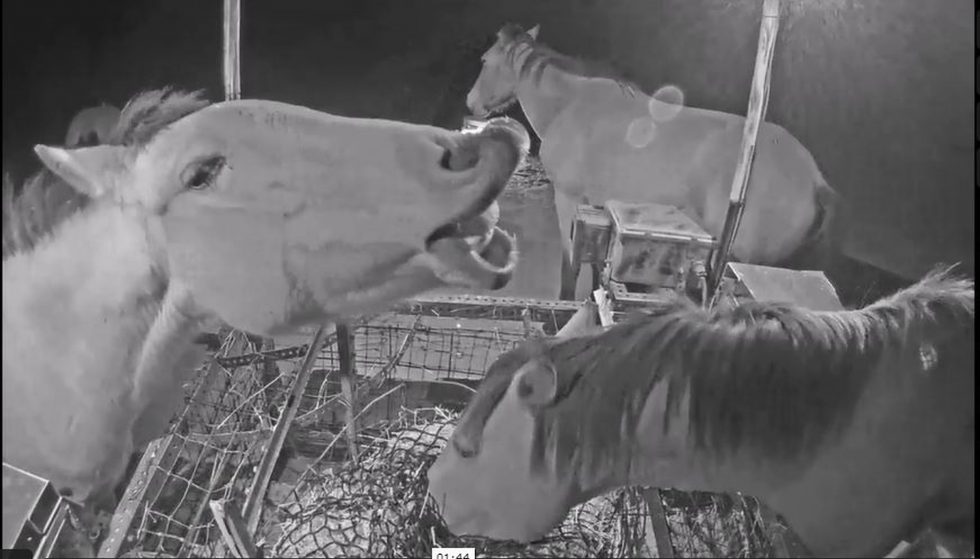NMSU, AgSprint client receive grant to help control wild horse population

Throughout the United States, wild horses still roam through the wide-open spaces. While they may be wild and free, they come at a cost to taxpayers, as much as $1 billion from 2019 to 2023, according to the U.S. Bureau of Land Management.
That’s an opportunity for Wildlife Protection Management, Inc., or WPM, to be a leader in helping the government with humane ways to control population growth and keep the horses, and other wildlife, healthy. Thanks to a $256,000 grant from the National Science Foundation, WPM will work with New Mexico State University faculty to manage the data they’ve been collecting.
Roch Hart, WPM’s CEO, used NMSU’s entrepreneur and business incubator Arrowhead Center services to work through the NSF grant application process. WPM had already grown by using several of the Arrowhead Center programs.
Hart first attended the six-week AgSprint, a cohort-based business accelerator that deepened his understanding of the market and future customer needs. He then participated in Arrowhead’s Technology Incubator to build the WPM’s first vaccine-delivery prototype. The prototype, attached to an alfalfa feeding station, remotely implants radio-frequency identification, or RFID, chips, vaccines and contraceptives into horses.
“We have been highly successful with the RFID. Better than we had hoped,” Hart said. “If we could cut costs by not having to implant every horse with a chip, then we could cut costs considerably. For that, facial recognition technology was the next avenue to explore. New Mexico Small Business Assistance helped us go in that direction first, which helped us to move forward with the NSF grant.”
Hart also used Arrowhead Center’s NM Federal and State Technology, or NM FAST, partnership program that provides help to businesses seeking federal funding through the Small Business Innovation Research grants.
“Hart has seen a lot of growth through using the range of programs at Arrowhead Center,” said Del Mackey, senior economic development officer at Arrowhead Center. “The AgSprint program helped him define the need for the tech. NMSBA helped him take it in a new direction, and the NSF SBIR Phase I grant will help him validate the feasibility of using facial recognition alongside the RFID for the identification of not only wild horses but also feral pigs and deer.”
“We do hope to take this technology for horses to other species and scale that technology up. This grant certainly helps that traction,” Hart said.
More traction for WPM will come through the collaboration with NMSU’s College of Engineering Associate Professor Laura Boucheron. With the support of a graduate student, Boucheron will spend a year dissecting WPM’s data and creating an effective method of animal recognition through videos and images.
“While they have RFID chips, the horses might have recognizable patterns on their faces or flanks or even scars that we can use to build an algorithm that detects individual animals,” Boucheron said. “The ultimate goal is to recognize individual animals based on videos or images and match them up with their RFID identification.”
Boucheron said the collaboration with WPM through Arrowhead Center allows her research to see different applications for her work and help with the inception of entrepreneurial activities.
“What we do can have a direct impact on a problem with the horse population,” she said. “It’s something that has quite the real-world applicability.”
For more information on growing a business through federal grants and state assistance, contact Mackey at delmacke@ad.nmsu.edu or 575-646-1815, or visit arrowheadcenter.nmsu.edu/program/nm-fast.
